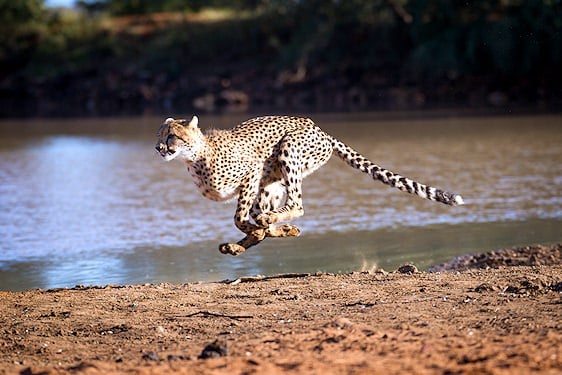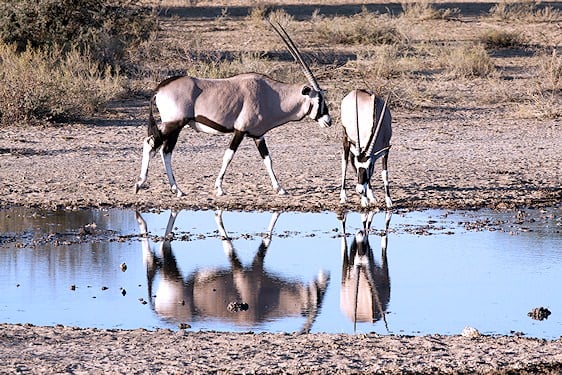- Home
- >
- African Travel
- >
- South Africa
- >
- National Parks
- >
- Kruger National Park
- >
- Mammals
- >
- Gray Duiker
Description
Common or gray duiker are the largest duiker species in the Kruger National Park. Males carry more prominent horns than other duiker. The coat is gray-brown with a pale belly, and a reddish crown sits below short, thorn-like horns. A long, narrow face shows a dark, charcoal-colored nasal bridge.

These antelope occur throughout sub-Saharan Africa, from the Sahel’s southern margins to Cape Point. The Kruger National Park holds abundant common duiker. They range from Lowveld savanna in the south through central grasslands and, farther north, into mopane and more tropical woodland as you cross the Tropic of Capricorn.

Status
The common duiker is widespread and abundant. Population estimates reach into the high six figures to low seven figures across sub-Saharan Africa, with no major rangewide threats. Local risks include habitat loss and overhunting near settlements, but overall numbers are considered stable in protected areas such as the Kruger National Park.

Habitat
Adaptable and secretive, common duiker thrive wherever dense cover allows concealment. Color and size vary with local climate and vegetation. In some urban fringes they persist in gardens, browsing leaves, fruit and flowers. Densities peak in savanna and woodland. In South Africa they are widespread, including Kruger’s woodlands and thickets.

Social Organization
Territorial and usually solitary or in pairs. Both sexes hold home ranges; at least one female range commonly overlaps a male territory. Scent glands mark boundaries with strong-smelling secretions. Rival males chase at high speed and threaten with horns when territorial limits are breached.
Finest Safari Areas in Africa for Encountering Gray Duiker
We recommend the following national parks and private reserves for the best chances of spotting gray duiker on safari game drives and guided bush walks.

Social Behavior
Light-footed and wary, gray duiker are most active at dawn and dusk, shifting to nocturnal where persecuted. Much of the day is spent defending territories and browsing fruits, pods and flowers when available. At the first sign of danger they freeze, then sprint to cover in a zig-zag burst.

Reproduction
Breeding occurs year-round. Courtship may include leg-lifting, calls and mutual urine testing, followed by rubbing. Copulation often begins within minutes. Gestation is about six to seven months; a single young is born and kept concealed for several weeks, though it can run within a few days.

Anti-Predator Behavior
When threatened, duiker give a sharp bleat and bound for shelter. Hunters exploit these calls to draw in larger carnivores such as hyena and leopard. Adults may confront small predator such as baboon or python when defending a fawn. If unseen, duiker remain motionless within dense cover.












